Parallel Line Pattern Development
19 Round Elbow
- Use the elbow rule (# of pcs × 2 − 2) to find the number of gores. For our example, it is 4 × 2 − 2 = 6. Each end piece is made up of 1 gore and each middle piece is made up of two gores.
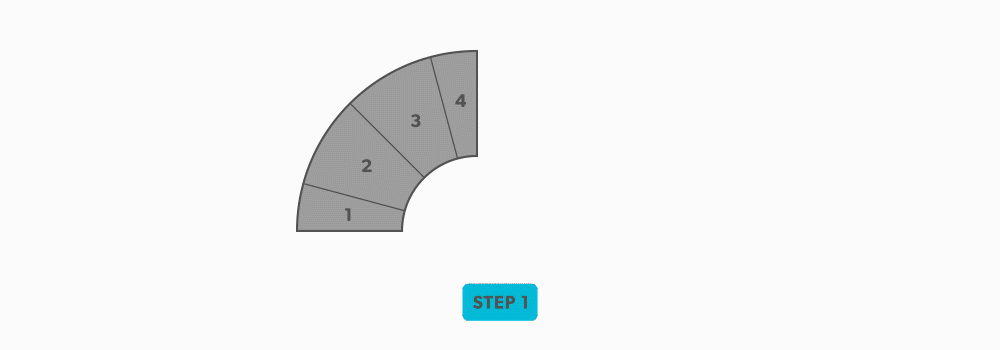
- Use the angle of the elbow divided by the number of gores to find the miter angle. In our case, 90° ÷ 6 = 15°.
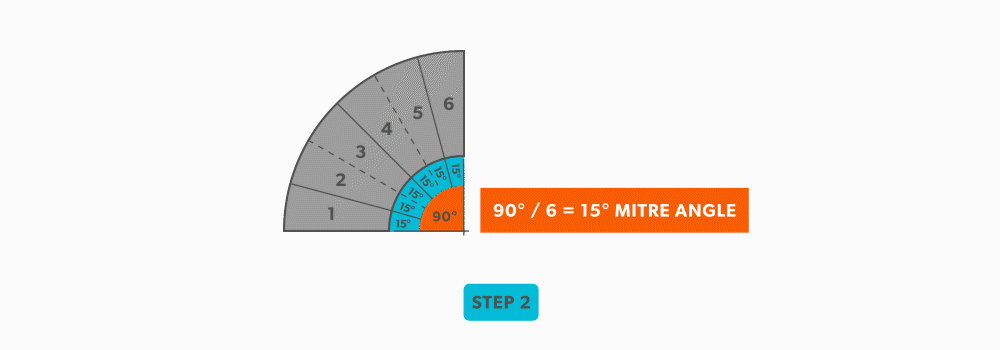
- Now that we know the miter angle is 15°, we can use an end gore and lay it out similar to a “Pipe on a Miter” (see Pipe on a Miter).
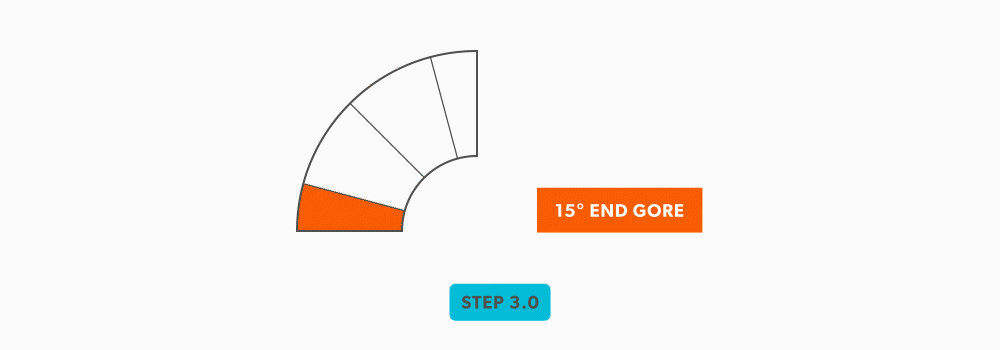
- Draw an elevation view, complete with the miter line.
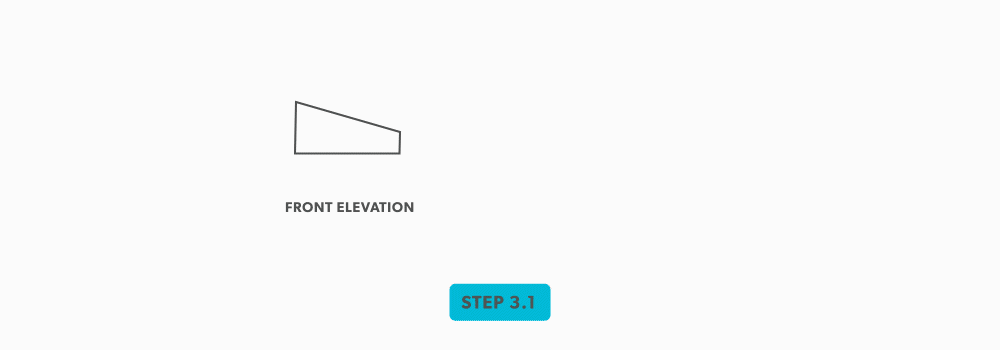
- Draw a profile below (see Divide a Circle Into 12 Equal Parts) and label it.
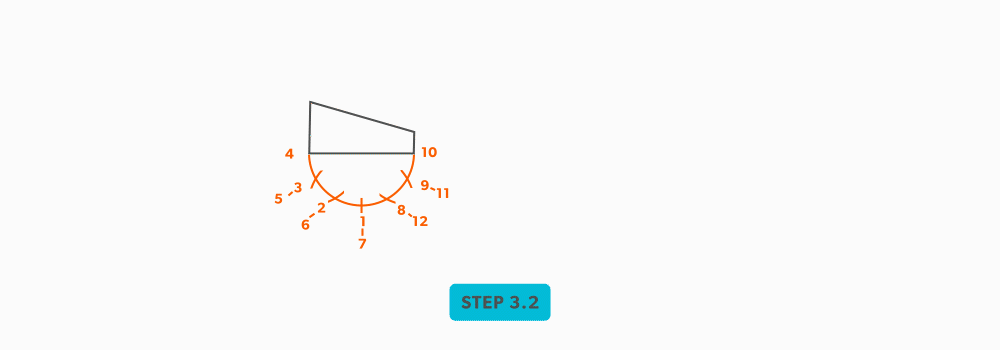
- Project the profile divisions up into the elevation view.
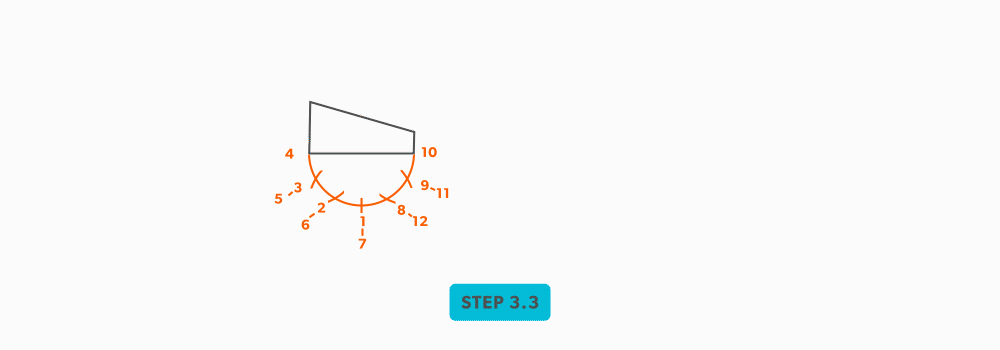
- Draw the stretch-out (6 × Pi) directly to the right of the elevation view and divide it into 12 equal parts (see Divide a Line Using a Ruler on an Angle). Label it to match the elevation view and make sure to start the labeling on centre of the gore. Add any required seam allowances outside of the stretch-out.
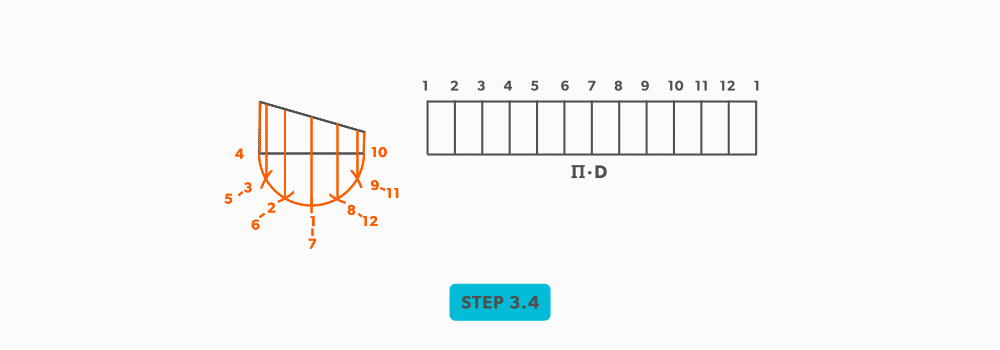
- At the points where the element lines cross the miter line, project them into the stretch-out.
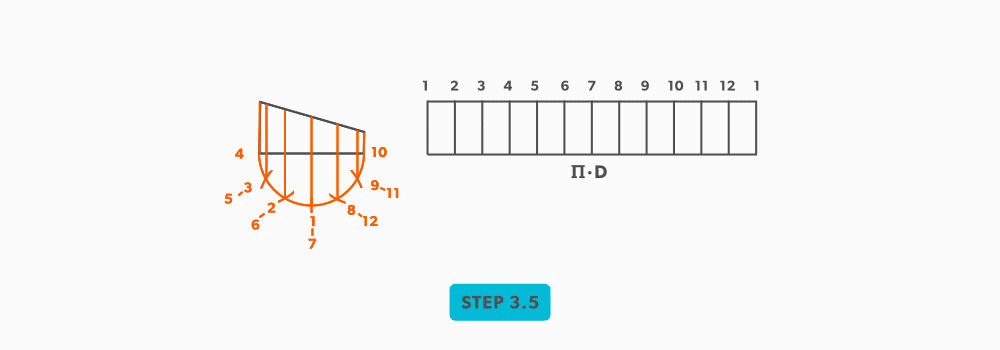
- Following the labeling, circle the intersection points on the stretch-out. Don’t put a dot over the points, but circle around them.
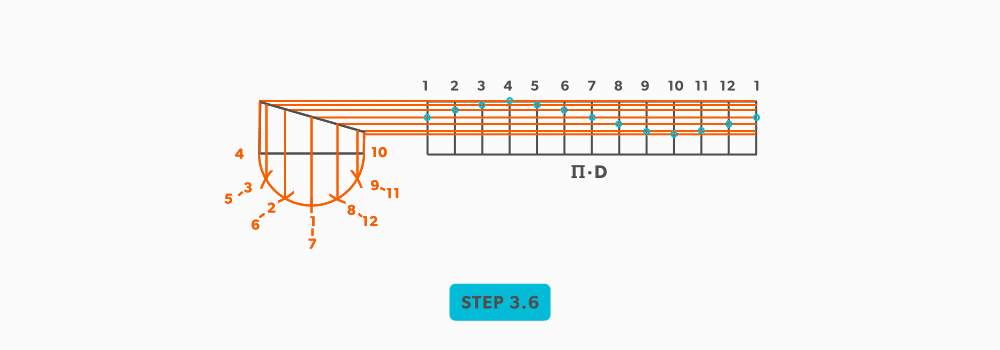
- Using a flexible curve, join the points to draw in the miter line, completing the pattern.
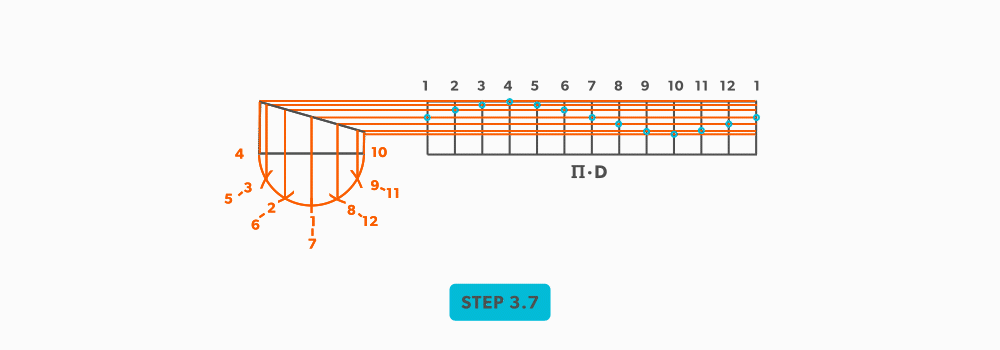
- Draw an elevation view, complete with the miter line.
- We now need to finish the calculation for the blank size of the elbow. We already have the stretch-out, but we need the height. This is found by multiplying the seam height by the number of gores. For our example, simply measure the elevation view and find the height of the element line on centre of the gore. This should be 2 7/16″. 2 7/16″ × 6 =14 5/8″.
- Now, cut out the blank size.
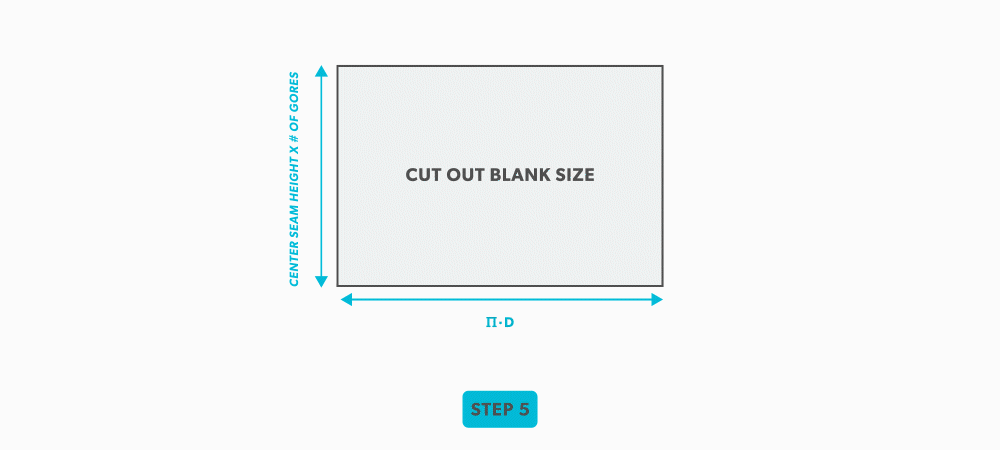
- Mark the seam height of each gore vertically on the stretch-out.
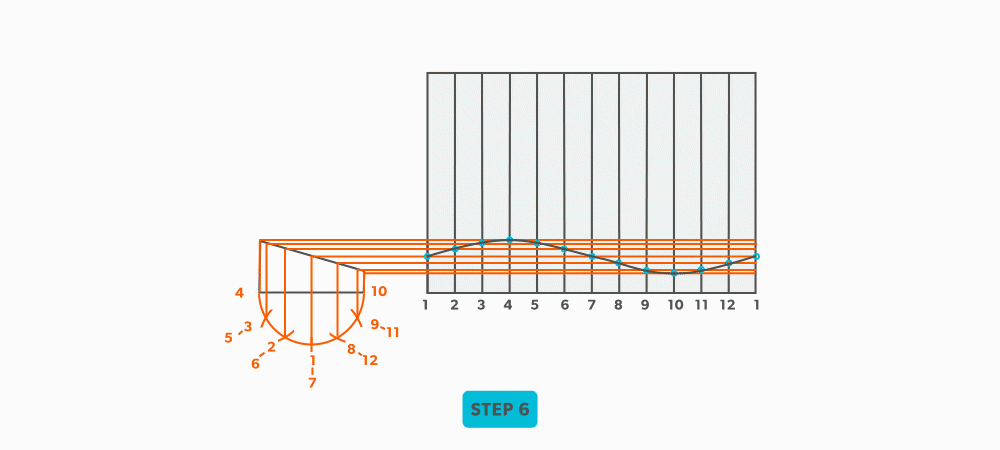
- To complete the elbow, trace or transfer the first gore pattern onto the blank and cut it out. Then, flip it and trace it for the rest of the gores. Do not flip left to right, only up and down and remember that you must leave 2 seam heights (2 gores) for the middle pieces. This will allow the seams to be orientated on opposing sides and produce the “fish” pattern.
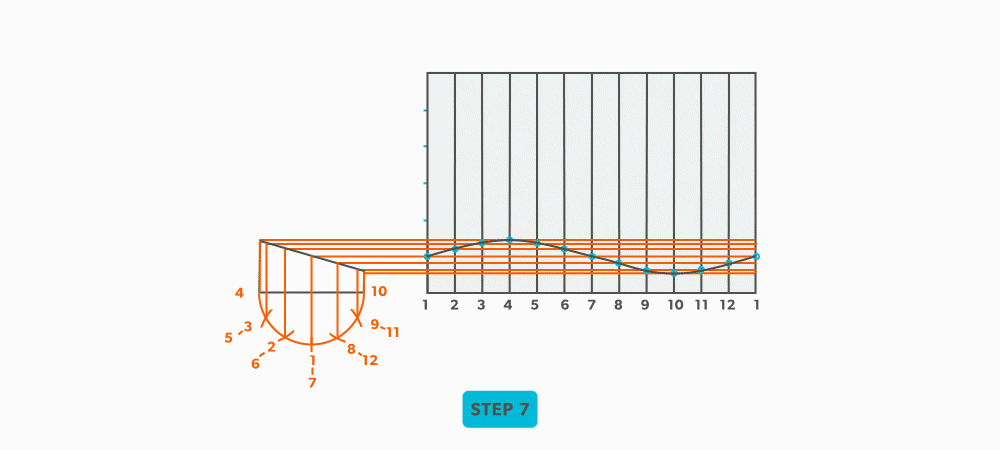
the number of pieces of a round elbow times 2 then minus 2(# of pcs x 2-2) gives us the number of gores in the elbow
a part of a round elbow which allows us to calculate the miter angle
an intersection of 2 pieces- an irregular cut on the end of something
looking at the front or side of something, to have elevation (height), 2D
a half of a plan view, drawn on the outside of an object
a shape which has been “stretched out”, to take a perimeter and make it straight
a line representing an edge or bend
the shape of the object, still in 2D form

